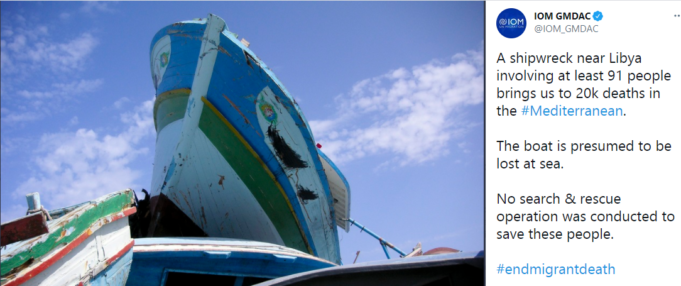(GIN)—The sight of refugees clinging to leaking boats, barely floating in frigid waters, or worse, washing up lifelessly on sandy shores, almost fails to shock after these images repeat over and over, year after year.
But consciences were re-awakened this week when a toddler from Mali was seen lifted from a sinking vessel packed with refugees. A team of Red Cross nurses worked frantically to resuscitate the girl who had suffered cardiac arrest. They hoped for a miracle. It never came.
Nabody was one of 52 people, including nine children from sub-Saharan African countries, on board a vessel off Spain’s Canary Islands, who spent five days in the Atlantic Ocean after leaving Dakhla on the Western Sahara coast.
“There are no words to describe so much pain,” Spanish Prime Minister Pedro Sanchez tweeted.
The attempted rescue made the front pages of several Spanish newspapers and highlighted the continuing plight of people fleeing violence or seeking better lives in Europe.
In 2020, over 23,000 migrants landed on the Islas Canarias, a figure eight times higher than the prior year.
The effect of Covid-19 pandemic on tourism and other industries in north and sub-Saharan Africa have pushed many more to embark on the perilous Atlantic crossing.
While the number of deaths fell this year, so-called “invisible shipwrecks” mean the real number is probably much higher, officials at the UN migration agency said.
These “shipwrecks” are events that cannot officially be corroborated because the vessels cannot be located, and information is insufficient. If officials learn about them at all, it is often through bereaved family members. Sometimes, the only indication is floating bodies and this week rescuers found the bodies of four children washed up on the shores of Libya from a boat believed to be carrying North and West African migrants and refugees.
Canary Island officials have raised the alarm, particularly as more children are making the journey by boat. Since October, more than 2,000 such children have arrived.
Among them was 16-year-old Diawoiye from Mali, who fled conflict and economic insecurity in his own country. He spent six days at sea making the journey. “In Mali, there’s a war now … my mother and father are over there, and now they are getting old and there’s no money, so I left and came here,” he told Al Jazeera.
The Canary Islands’ regional government has opened 21 emergency centers for unaccompanied children but more needs to be done to support the refugee children, said Catalina Perazzo, a spokeswoman for Save the Children.













